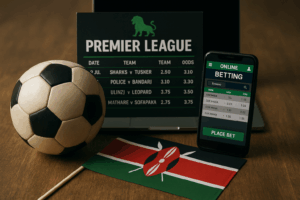
Most bettors overlook the importance of reading the market and tracking football betting line movements. By understanding these shifts, you can gain valuable insights into how the public and sharp bettors are placing their wagers. In this guide, I will share my strategies for interpreting line movements and identifying key indicators that could signal profitable betting opportunities. With practice, you can develop a more informed perspective on the market, enhancing your overall betting strategy and potential for success.
Key Takeaways:
- Market movements indicate where the majority of betting activity is occurring, often reflecting the sentiment or expectations surrounding a game.
- Sharp money, or bets from professional gamblers, often moves lines significantly; observing these shifts can provide insights into potential outcomes.
- Pay attention to line movements in relation to injuries, weather conditions, and team news, as these factors can greatly influence public perception and betting patterns.
Deciphering the Language of Betting Lines
Understanding betting lines is like learning a new language; once you grasp it, you can communicate effectively with the betting markets. By interpreting these lines, I can spot value bets and adjust my strategies accordingly. Knowing whether a line moves in favor of one team or shifts suddenly due to late-breaking news equips you with a clearer picture of public sentiment and sharp money action.
Unpacking Point Spreads, Moneylines, and Totals
Point spreads, moneylines, and totals are the three primary components of football betting. Point spreads determine the margin of victory a team must achieve for a bet to pay off, while moneylines indicate the outright winner without regard for the score. Totals, often referred to as the over/under, outline the expected combined score of both teams in a game. Each of these elements plays a pivotal role in shaping my betting decisions.
Recognizing Key Terminology and Concepts
Familiarizing yourself with betting terminology significantly aids in making informed choices. Terms like “vig,” or vigorish, represent the bookie’s commission, while “juice” refers to the extra amount a bettor pays on a wager. Understanding concepts such as “closing line” and “line movement” can also help you gauge market sentiment and cleanly identify value as you analyze the ever-changing landscape of football betting.
Moreover, grasping these terms allows you to dissect the nuances behind betting lines more effectively. For instance, the closing line is often seen as a reflection of the most informed market view right before kickoff. If your initial bet differs from the closing line, that disparity can indicate where public and sharp money are landing. Recognizing patterns like these empowers you to implement stronger betting strategies and capitalize on market inefficiencies.
Market Influencers and Their Impact on Lines
Various factors can sway betting lines, creating opportunities for savvy bettors. Key influencers include sharp bettors, heavy betting syndicates, and injuries to key players. Each component actively shapes the perception of a game and can lead to significant line movement. Tracking these components allows you to anticipate shifts and better position your bets, ensuring you’re on the right side of the action. Understanding these influencers, along with how they manipulate line movements, can enhance your overall betting strategy.
The Role of Public Perception and Media
Media narratives and public sentiment can dramatically impact betting lines, often swaying them away from the statistical realities of a matchup. When a team receives excessive media coverage, or when a star player is featured prominently, the public sentiment can lean heavily towards that team, leading to inflated lines. This is particularly relevant when betting favorites, as I’ve observed line shifts around significant media events or storylines. Recognizing these trends can help you identify when to take advantage of overreactions.
Understanding Sharp Money vs. Public Money Dynamics
The distinction between sharp money and public money is vital in analyzing line movements. Sharp money comes from professional bettors who analyze data rigorously, while public money usually stems from casual fans swayed by narratives or team loyalty. Whenever I see a line move dramatically in the opposite direction of where the majority of bets are being placed, I pay close attention; this often indicates that sharp money is influencing the line.
Differentiating between sharp money and public money dynamics reveals actionable insights for betting strategies. For instance, if a line moves in favor of a team despite the public heavily backing the opposite side, it suggests professionals have identified value in that team, warranting serious consideration. Tracking this contrast across games can help refine your betting decisions and find value that others might overlook. Ultimately, visiting betting exchanges and observing line movements against public sentiment can set you apart from recreational bettors.
Monitoring Line Movements: Tools of the Trade
Staying on top of line movements requires using the right tools and resources to make informed betting decisions. Utilizing advanced tracking software, you can observe real-time shifts in betting lines, which often signal how the market perceives the game’s outcome. Many professional bettors rely on these tools to gain an edge, especially when following major events where public sentiment can skew lines dramatically.
Utilizing Online Resources and Tracking Tools
Numerous online platforms provide comprehensive coverage of line movements, offering insights into the current betting landscape. Websites such as Sportsbook Review and Odds Shark aggregate data, showing you trends and providing real-time updates on line changes across multiple sportsbooks. By leveraging these resources, you can make decisions based on the latest shifts rather than outdated information.
Analyzing Historical Data and Trends
Digging into historical data can reveal patterns that might affect your betting strategy. I’ve found that looking at how lines have shifted in similar matchups in the past can be enlightening, particularly regarding public betting percentages and key injuries or game-day weather conditions that could impact performance.
Over the years, I’ve observed that certain teams often evoke a consistent public response, influencing line movement irrespective of their actual performance metrics. For instance, if a popular franchise starts to decline, their lines may not reflect the same level of skepticism the market typically imposes on lesser-known teams. By compiling data on past games, trends, and outcomes—especially around pivotal player injuries or significant events—you can gain a deeper understanding of how past performance correlates with current line movements. More specifically, I analyze trends over several seasons and identify when lines were too optimistic or pessimistic, giving me critical insights on betting opportunities that might be overlooked by the average bettor.
Interpreting the Signals Behind Line Changes
Understanding the reasons behind line changes is necessary for successful betting. When a line shifts, it can signal changing public sentiment, an influx of sharp money, or even critical player injuries. For instance, if a star quarterback is ruled out and I see the line move significantly, it indicates that the market is reacting strongly to that news, suggesting value in betting against the affected team. Keeping track of the context behind these shifts allows you to make more accurate predictions based on a deeper analysis rather than just surface-level observations.
Differentiating Between Genuine Movement and Noise
Many bettors fall victim to the noise generated by everyday fluctuations in betting lines. Genuine movement occurs due to significant information, whereas noise can stem from minor adjustments or low-stakes public betting. By observing the betting public’s biases, such as heavy action on a popular team after a notable win, I can identify when adjustments are simply noise. Tracking these fluctuations is necessary to discern real opportunities from transient noise that can mislead my betting decisions.
Adjusting Betting Strategies Based on Line Dynamics
Adapting my betting strategies in response to line dynamics can significantly enhance my overall performance. For example, if I observe a late line movement right before game time that contradicts the initial market line, I might reassess my position. This shift could indicate behind-the-scenes information or confidence from sharper bettors, often highlighting where value lies. By being flexible, I can pivot my bets in real-time, ensuring I’m capitalizing on the most updated market signals and positioning myself for the best potential outcomes.
When I notice meaningful line changes close to game time, I consider various factors such as the betting percentages and the direction of the money. For instance, if the line moves against a heavily favored team but the betting percentage remains high for that team, I might find an edge by wagering on the undervalued opponent. Tracking these dynamics not only adds depth to my analysis but also allows me to bet strategically rather than reactively. This approach has proven invaluable in taking advantage of mispriced lines and improving my overall betting success.
The Psychological Edge: Betting Line Movements as Market Sentiment
Analyzing betting line movements reveals much about the market sentiment surrounding a game. Lines reflect the collective psychology of bettors and can signal shifts in public belief regarding a team’s chances of winning. Noticing whether the line is moving towards a specific team can indicate where the money is flowing and, consequently, where you might find value in your bets.
Gauging Team Performance and Market Reaction
Tracking team performance in relation to betting lines can uncover valuable insights. If a team’s performance is strong yet the line moves against them, it may suggest that public sentiment or insider information is influencing the market. Understanding this dynamic enables you to capitalize on mispriced odds.
Leveraging Fan Influence and Betting Patterns
Fan sentiment can significantly sway betting lines, especially in high-profile matchups. Lines often shift due to large bets placed by fans or sharp bettors motivated by popular opinion rather than statistical analysis. This can create opportunities for those willing to go against prevailing trends.
In particular, I find that during rivalry games or once a team has a notable star, the public’s emotional attachment can create inflated lines. For instance, when a popular team like the Dallas Cowboys is playing poorly yet the line moves in their favor due to fan support, it can offer valuable leverage. By identifying patterns in team performance against market actions and staying aware of fan influence, you can spot potential betting edges that may not be obvious to the average bettor.
To wrap up
The key to understanding football betting line movements lies in recognizing how various factors impact these changes. By closely monitoring odds fluctuations and identifying the reasons behind them—such as injuries, weather conditions, or public betting trends—I can make informed decisions for my betting strategy. It’s crucial to stay vigilant and analyze the market consistently. As I improve my ability to read these movements, I enhance my chances of finding value bets and ultimately improving my success in football betting.






